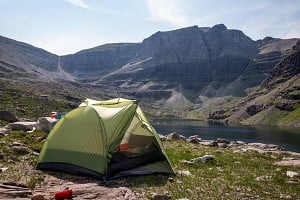
Nemo are a small US company, less than ten years old but already known for quality tents with innovative design features such as Air Supported Technology, which creates an entire tent shape from one compound curved airbeam rather than solid poles, and uses welding instead of sewing. Compared to its inflatable siblings the principles behind the OBI 1P are a little more conventional - but only a little. This is still a quirky wee beast, and very likeable.
I do a fair bit of solo backpacking and sleeping out in the hills, and while I enjoy the light weight and open air feel of bivvying (see recent review here), the Scottish weather and midges can often make something more substantial a good option. Enter the one person tent, small and light enough to be carried up hills comfortably and much more reassuring than a tarp or bivvy bag on a foul night.
Most err on the bijou side when it comes to living room, but any tent worth having should still boast such mod cons as sewn-in waterproof groundsheet, insect-proof inner and a porch big enough for gear storage and (ideally) wet weather cooking. Compromise too far on any of these and you might as well not bother. Many makes and models of solo tent are available, and while there's an occasional budget gem such as a legendary Argos model (now sadly out of production) in general those with the best sturdiness-to-weight ratio will cost a bit. Consider it an investment into years of future solo hill trips.
At £400 the OBI 1P is a decidedly top-end offering and it has a build quality to match. It has a striking wedge-like semi-geodesic shape, great stability, spacious internal dimensions and several well thought out features. I took it to Knoydart's well named Rough Bounds for a couple of days. With its uncompromising terrain and notoriously high rainfall and midge levels this is as good a place as any I can think of to put both walkers and their gear through their paces.

I'll begin at the beginning – pitching. The OBI pitches inner first, running the risk that in rain everything will get soggy before you've had time to fit the fly. There is no getting away from it, in our climate that is a fairly significant minus point versus tents that pitch fly first or better yet all in one. That said it is quick to pitch, and it is at the pitching stage that one of this tent's less conventional characteristics is revealed. The DAC pole comes as a single shock-corded piece that dovetails at two hub points rear and front to make what is in essence an A-frame shape (though it doesn't look much like it at first glance since the head end is higher than the foot end and the central ridge is curved).
"...It is at the pitching stage that one of this tent's less conventional characteristics is revealed..."The balled pole ends pop neatly into shallow plastic sockets ('Jack's Feet', apparently) at the four corners of the tent inner. At first you think they'll pop back out with the slightest pressure but in fact once the fly is fitted over the top the whole arrangement is very solid. The inner hangs from the frame from a number of pole clips, taking seconds to erect. The fly quickly secures onto the Jack's Feet, at which points it can be tightened or loosened with little plastic buckles. When tensioned it has a very snug fit, with none of the annoying rustling that can disturb your nights' sleep in some looser-flyed single person tent designs. The OBI can also be pitched sans inner, though this requires you to buy a separate 'Footprint' groundsheet and in the UK the benefit of going inner free seems doubtful.
Unlike many lightweight (and even not-so-lightweight) tents the OBI's is fundamentally a free standing structure that does not rely on pegs to remain upright. On stony ground this is very welcome. The porch and the side of the fly opposite to the door do need to be pegged out though, and these two pegging points can be adjusted for tension with a neat locking cord affair. The ridged pegs supplied are both lightweight and very rigid, their only negative being that the heads are too sharp to push them into the ground with an unprotected hand – I've just been hammering them with rocks. Once erected the structure feels reassuringly solid, and if it's pitched feet to the wind it will happily withstand quite blustery conditions. There are a number of guying points should extra stability be needed in the heaviest weather. If asked, I'd call this a three season tent.
Its poles are not the least of the OBI's eccentricities. The lightweight 20D PU nylon fly is cut unusually high at the head end and along the side opposite the door, both to save weight and to maximise ventilation. To compensate for this the parts of the inner tent that are thus exposed to the elements have been made of waterproof material in a high bathtub style. I am told that this tent is tested in 180 degree rain chambers, so in theory even driving rain shouldn't get in. While I have not yet had the misfortune to put this to the test, it seems pretty clear that water would have to be carried on a strong updraught in order to get past both fly and inner – not something you're likely to encounter too often. I guess if anywhere can furnish those specific conditions it will be the hills of Scotland, or maybe Snowdonia on a bank holiday.
"This tent is tested in 180 degree rain chambers, so in theory even driving rain shouldn't get in..."
The rest of the inner is a fine woven mesh, very light and airy. This radically vented arrangement has obviously been designed to suit typical American conditions; in a stiff Scottish sea breeze on an 850m col I found the amount of air wafting through the tent pretty chilly and had to wear a fleece and hat all night inside a lightweight down bag – and this in June, at a fairly benign ambient temperature of 7ºC according to my barometer. Cooking was a bit of an issue too, though achievable. Its draughtiness would make the OBI 1P ideal for hikes in warmer climes – the Pyrenees in summer, say, or lower level summertime walking in the UK. However for the broader, breezier range of conditions you might reasonably expect among the UK's hills the OBI in its current incarnation is too well vented for its own good. But all is not lost, and I am promised that a UK-specific full nylon inner will be available in 2012. The 30D PU nylon groundsheet is very light, but if a wet spell in Knoydart is anything to go by it's fully able to keep the damp where it belongs – on the outside.
The OBI 1P is higher and wider at the head end, tapering markedly towards the feet where the extra dimensions are not needed. This obviously saves weight without sacrificing liveability. With floor dimensions of 221 x 99cm (max) and just enough headroom for me to sit upright (I'm 6 foot on the nose, or rather the crown) there's plenty of room for one person. In addition to this the porch is spacious enough to store boots, pack and wet waterproofs, and still leave room to cook. Entry is via a wide external door and a D-shaped inner door. The zip closures for these are very lightweight, and if it weren't for the OBI's general build quality and lifetime warranty I'd have slight doubts as to their longevity - though so far there's been no cause for concern. Inside there's one small storage pocket on the wall. Much more exciting is the ceiling-mounted Integrated Light Pocket (™), a little pouch into which you can slot a headtorch. Made of a light-diffusing fabric that spreads a soft illumination around the tent, this banishes the annoying spotlight effect of a hanging torch.
The OBI 1P can be disassembled in a minute or two. The fabric parts and pegs go into a compression sack that can be squidged pretty small, while the poles get their own sleeve and are best considered a separate unit for packing purposes. Manufacturers' quoted tent weights often seem a little off to me (not always underestimates either). Nemo suggest an average packed weight of 1.5kg but on my kitchen scales the lot weighs in at 1365g, which is respectable for a one-person tent. This would have been more impressive a couple of years ago. These days though that's far from cutting edge minimalism since double walled one person tents can now be found weighing less than 600g (at a price). It's also a few hundred grams heavier than the Terra Nova Laser Competition I've been using for the last couple of years, though the difference is not enough to sit heavily on the shoulders, and for the extra weight it is both sturdier and roomier. A more informative comparison might be with the Terra Nova Solar range which are self supporting solo tents in a similar semi-geodesic mould to the OBI 1P, and both considerably lighter and slightly cheaper; I haven't had the chance to check these out in the flesh though.
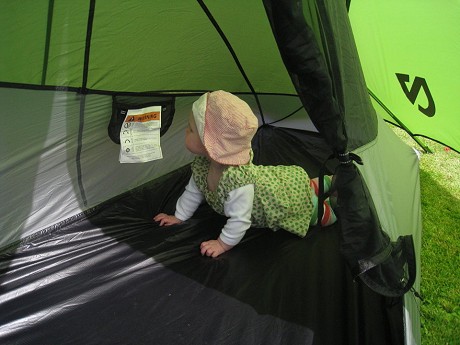
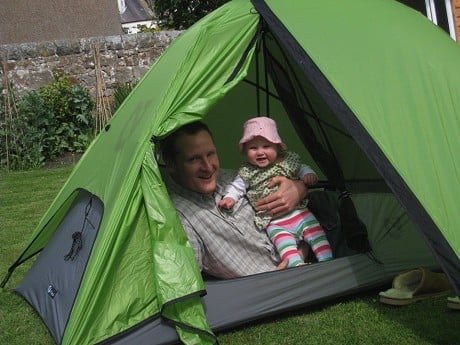
In summary
The OBI 1P is an excellent choice for the solo walker who's willing to sacrifice the ultimate in low weight for a roomier and sturdier tent. If you're the sort of person that delights in clever little design touches then it's got plenty to keep you happy too. It's built to take a lot of rain, even driving rain, but with the high cut fly and mesh inner it's chilly on a breezy night and so best suited to fair weather hiking or warmer overseas trips where ventilation is a bonus rather than a niggle. In 2012 a nylon inner should resolve this issue and make the tent better adapted to Britain. Given this promised improvement I don't have an unkind word to say about the OBI 1P, except one; £400 is a lot to pay for a three season solo tent when both cheaper and considerably lighter models are available.
Weight: 1365g (my figure)
For more details see: The Nemo website
About Dan Bailey
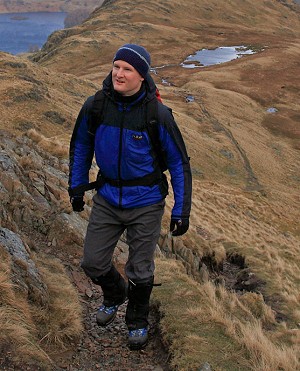
Dan Bailey, UKH Editor (News), is the author of several guidebooks including West Highland Way, The Ridges of England, Wales and Ireland - Scrambles and Climbs and Scotland's Mountain Ridges - A Guide to Scrambles and Climbs described as 'a work of considerable authority, I can recommend (it) unreservedly' by Chris Craggs. Dan lives in Fife and has always had a passion for climbing and the outdoors. His work features widely in print and online media, from outdoor mags to Sunday papers.




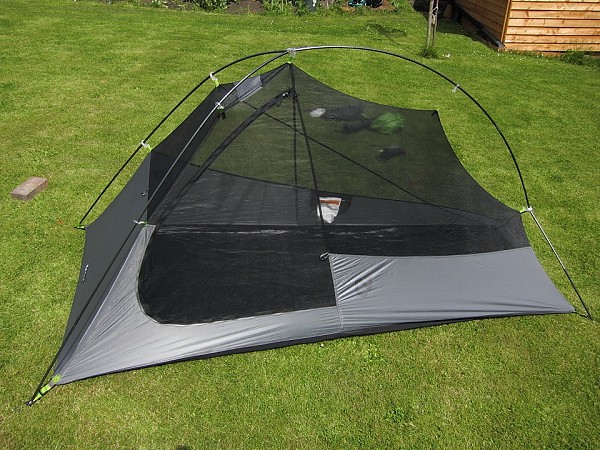
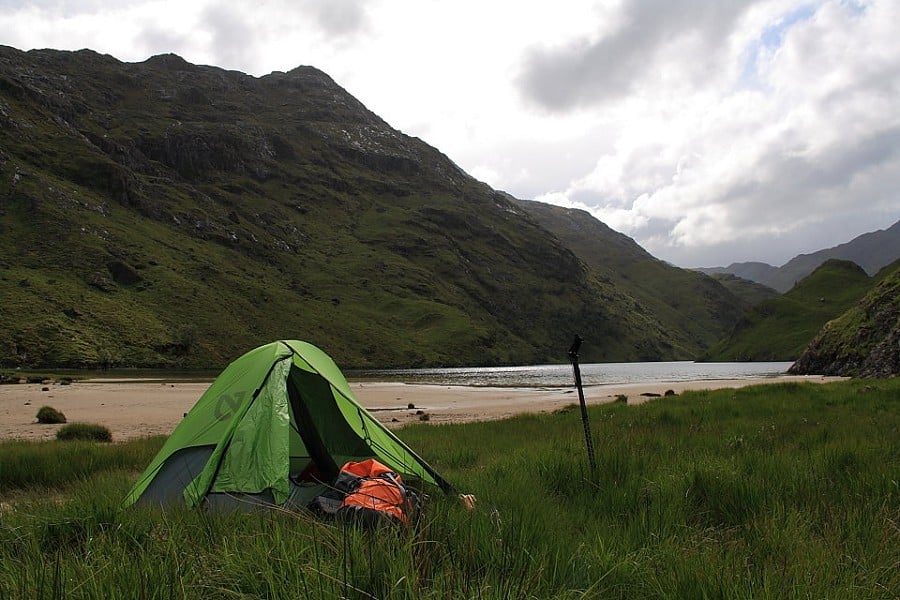
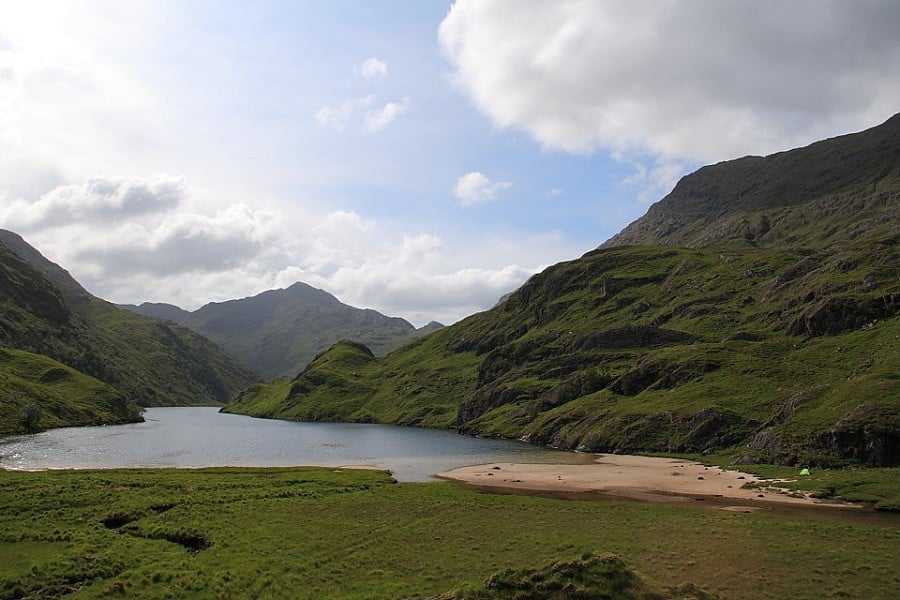
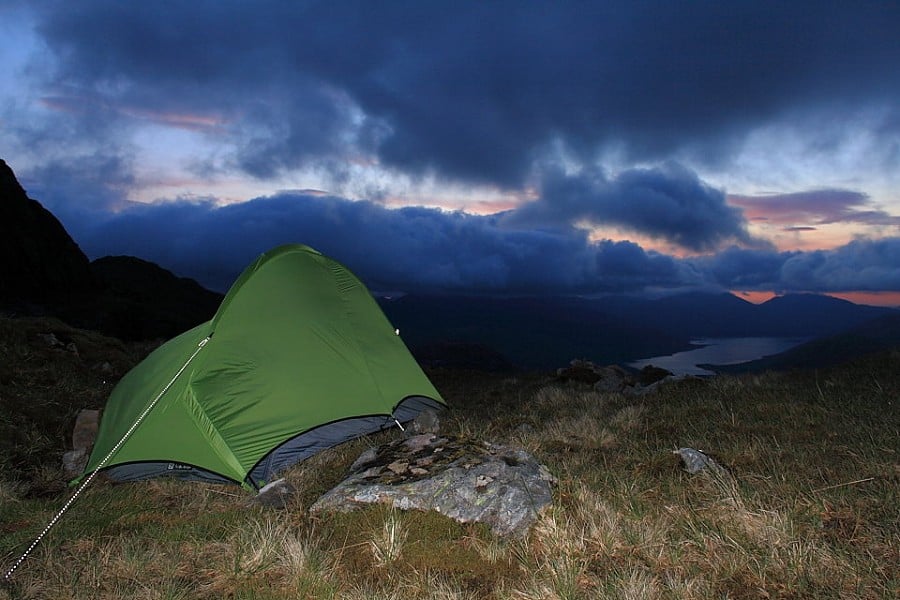
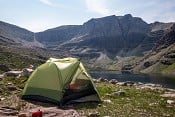
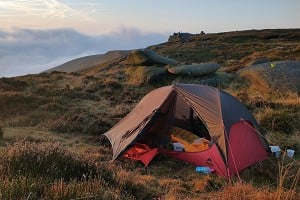
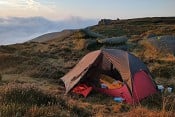
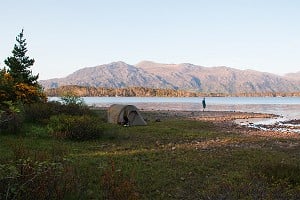
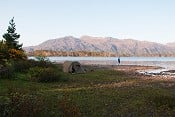
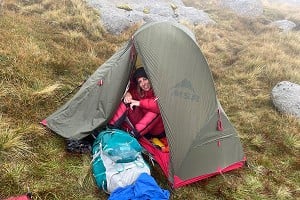
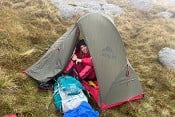
Comments